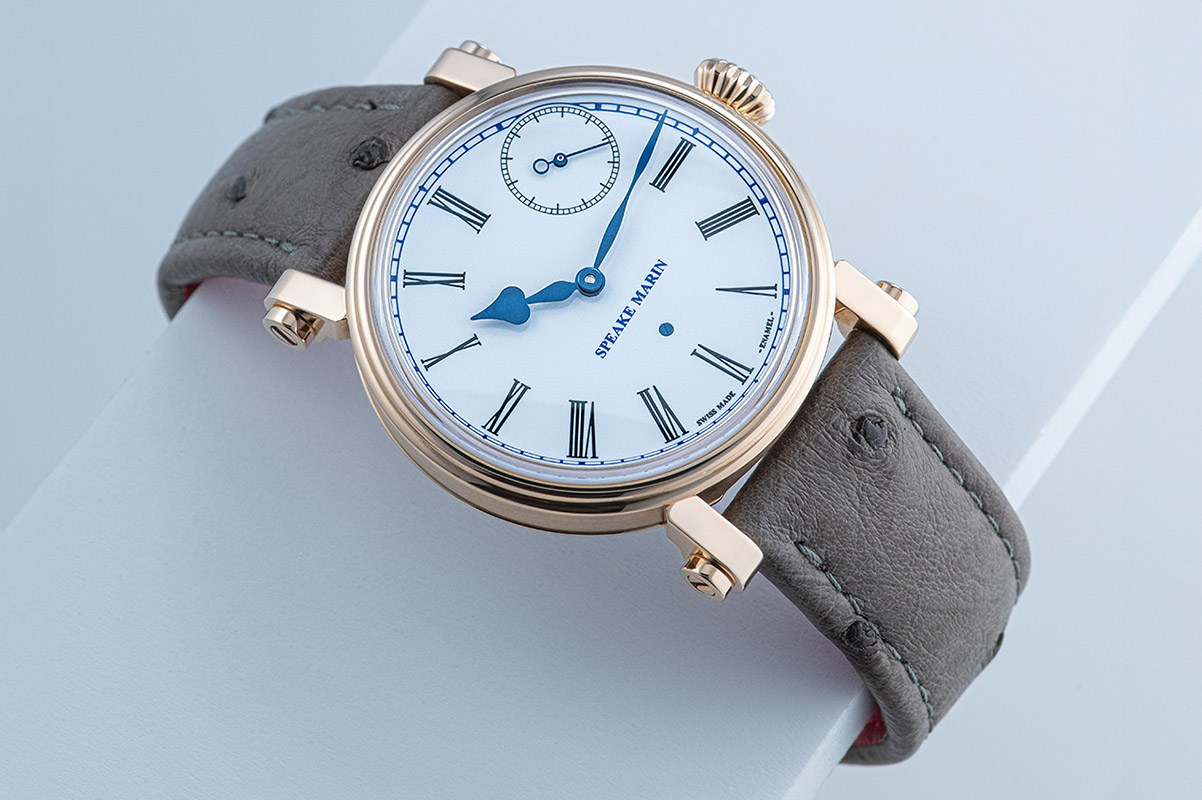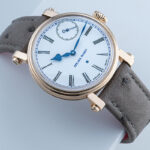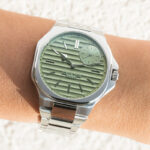This post is also available in: Italian
Two new models from the Resilience collection will be among the novelties from Speake Marin to be presented at Watches and Wonders Geneva. This is a classic collection, just like all of the brand’s designs, which are all inspired by British tradition. Speake Marin’s latest creations are the Resilience Gold and the Resilience Titanium, both of which are very British and classy. We can state that the Speake Marin Resilience Gold is made to defy time. This is true of both of them.
Today, we will focus mainly on the Resilience Gold, but first, let us introduce one of the strong points of both watches: the enamel dial.
But why enamel?
As our readers of the historical section of The Giornale degli Orologi will know, enamel and watches are a winning combination. The art of enamelling is very old; examples date back to the time of the Egyptians. Mineral powders are placed in carefully calibrated proportions on a suitable substrate, which is then heated to a very high temperature. The powders melt and vitrify. After a final polish, the result is a brightly coloured, glassy layer.
The perfection of the surface, the stability of the colour and the range of colours available opened the way to various applications. While the watchmaking sector immediately considered decorating cases, the first white dials did not appear until the beginning of the 18th century. As with many clocks, they could have been obtained simply by painting a plate of suitable material. However, over time, they would have started to yellow. Enamel, on the other hand, remains true to itself, even centuries later, providing a perfect, shiny background against which to read the time.
However, enamelling is and always has been an art form. To achieve vitrification, high temperatures must be reached, and the entire process is highly critical. Speake Marin tells us that the dial of its Resilience Gold is made using Grand Feu enamelling. In the art of enamelling, Grand Feu is the essential high-temperature step for vitrification. It is a critical phase: there is a risk of softening — or even worse — the plate to be enamelled and ruining everything. This is why Speake Marin revisits the art of enamelled dials by introducing new technologies. Let’s take a look at them together.
The dial of the Speake Marin Resilience Gold
The result is perfect, no doubt. But nothing in watchmaking is the result of chance. A very special alchemy is required to achieve impeccable dials that, despite their sobriety, are true statements of style. Firstly, the choice of substrate material: the plate that will become the actual dial. Speake Marin chose Inconel, an alloy of nickel, chrome and other elements that has the characteristic of “withstanding” even very high temperatures, without deforming.
An intermediate micro-processing of the sheet creates an imperceptible, but fundamental orange peel effect. At this stage, the so-called dry glazing takes place. In this way, the contact surface is increased and a first layer of enamel powder “clings”, as they say in the jargon, optimally. The white enamel chosen is Japanese: difficult to work with, but a guarantee of an impeccable result. Firing takes place at around 800°C, for about five minutes.
We then move on to the cooling stage before returning to the enamelling process. Five kiln passes are required to reach the final stage, and any imperfection in the timing or materials used would compromise the result. This would compromise the final result. Each temperature transition is a precise process. After the final oven pass and cooling under controlled conditions, the final polishing is carried out.
A classy choice!
Having admired the whiteness of the Speake Marin Resilience Gold dial, let us now take a look at the watch as a whole. On the dial, the hours are marked with black Roman numerals, contrasting elegantly with the blue external chemin de fer minute track. The hands, the brand logo and a small screw in the centre of the dial are also blue, purely for aesthetic purposes. The small seconds dial is positioned at 1.30 o’clock, adding a touch of originality. Perfect legibility and a retro yet playful air: it impresses on all fronts.
The 5N red gold case is derived from the famous Piccadilly and was reinterpreted by Eric Giroud in 2017. With a diameter of 38 mm and a thickness of 10.5 mm, it captivates those who recognise quality without ever becoming ostentatious. The conical winding crown, a distinctive feature of the brand, is skilfully designed to combine ergonomics and a secure grip with visual balance. The balance of the lines, soft yet restrained, makes the watch elegant yet perfectly usable on less formal occasions. Always with class, of course. The visible case back allows us to admire the movement, which we will now explore.
Mechanics, between art and technique
For the Resilience Gold, the Swiss Maison has adopted the SMA03 calibre, produced by Le Cercle Horloger, Christelle Rosnoblet’s La Chaux-de-Fonds workshop. Rosnoblet is a Swiss entrepreneur who also owns Speake Marin. This self-winding movement features a tungsten micro-rotor, a 4 Hz balance (28,800 vibrations per hour), and offers 52 hours of autonomy when fully wound. The movement’s appearance is of the highest calibre, featuring subtle Côtes de Genève and anglage for the bridges. Black rhodium-plated finish of the upper plate and bridges adds to its undeniable appeal.
The commercial launch is scheduled for the end of April 2025 and the list price in Switzerland is 26,900 Swiss francs, net of taxes.



